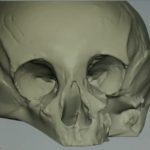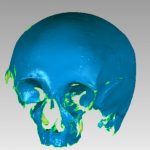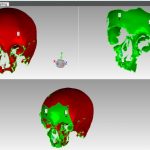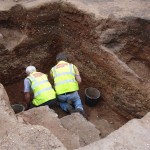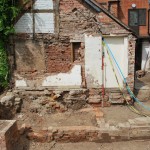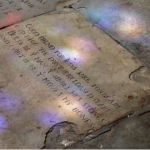The Beoley Skull: Forensic Investigation at St Leonard’s, Beoley
St Leonard’s Church and the Sheldon Crypt
The Centre of Archaeology based at Staffordshire University completed a forensic archaeological investigation at St Leonard’s Church, Beoley, Worcestershire. With its origins dating back to the early 12th century, as demonstrated by its surviving Norman arch, the present building appears to date to several periods ranging from the early 13th century to the early 14th century. Although disputed, the south aisle may represent the earliest construction (c.1200) with the north aisle and west extension being around 100 years later (Richardson 2013). Of particular interest of this investigation is the Sheldon Chapel, and more specifically the family vault that lies beneath. Built between 1570 and 1600, the Sheldon Chapel family vault holds seven members of the Sheldon family and four unidentified skeletons. In addition, the vault also contains an unidentified skull that may belong to William Shakespeare and it is this that is the focus of this investigation.
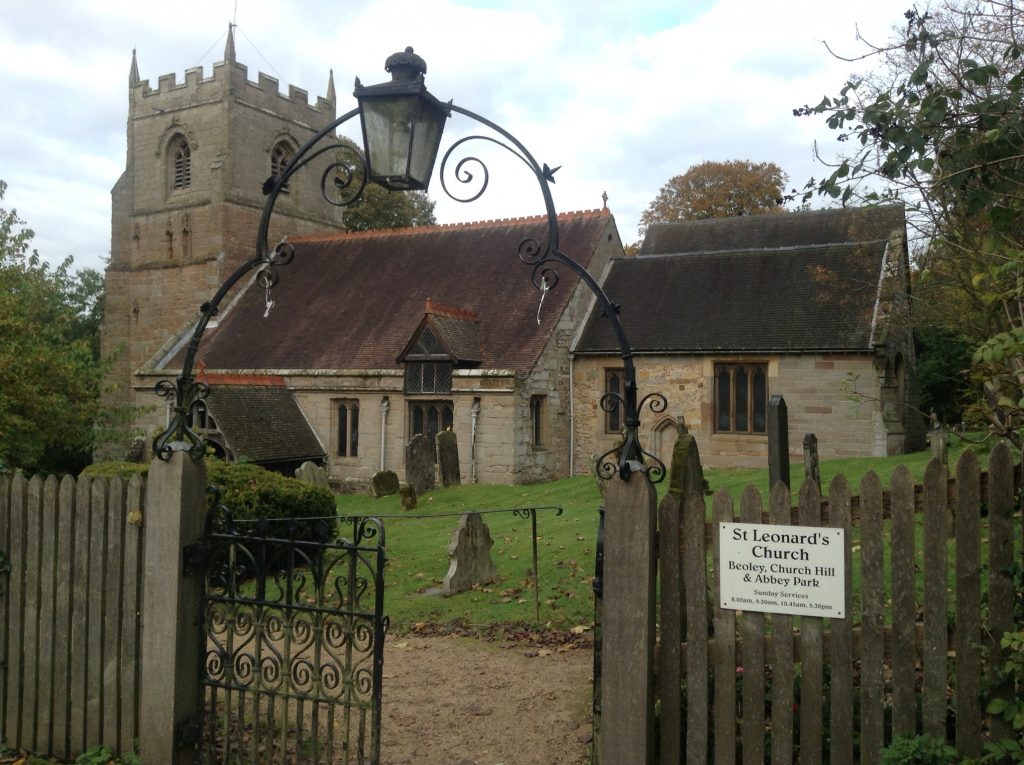
Recording the skull
The mystery skull resides in a small chamber recessed into the wall of the crypt. A forensic photographer was employed to ensure that a full record of the skull was completed. This was followed by a comprehensive and detailed laser scan of the skull using a Faro Arm scanner that produces scan data of submillimetre level.
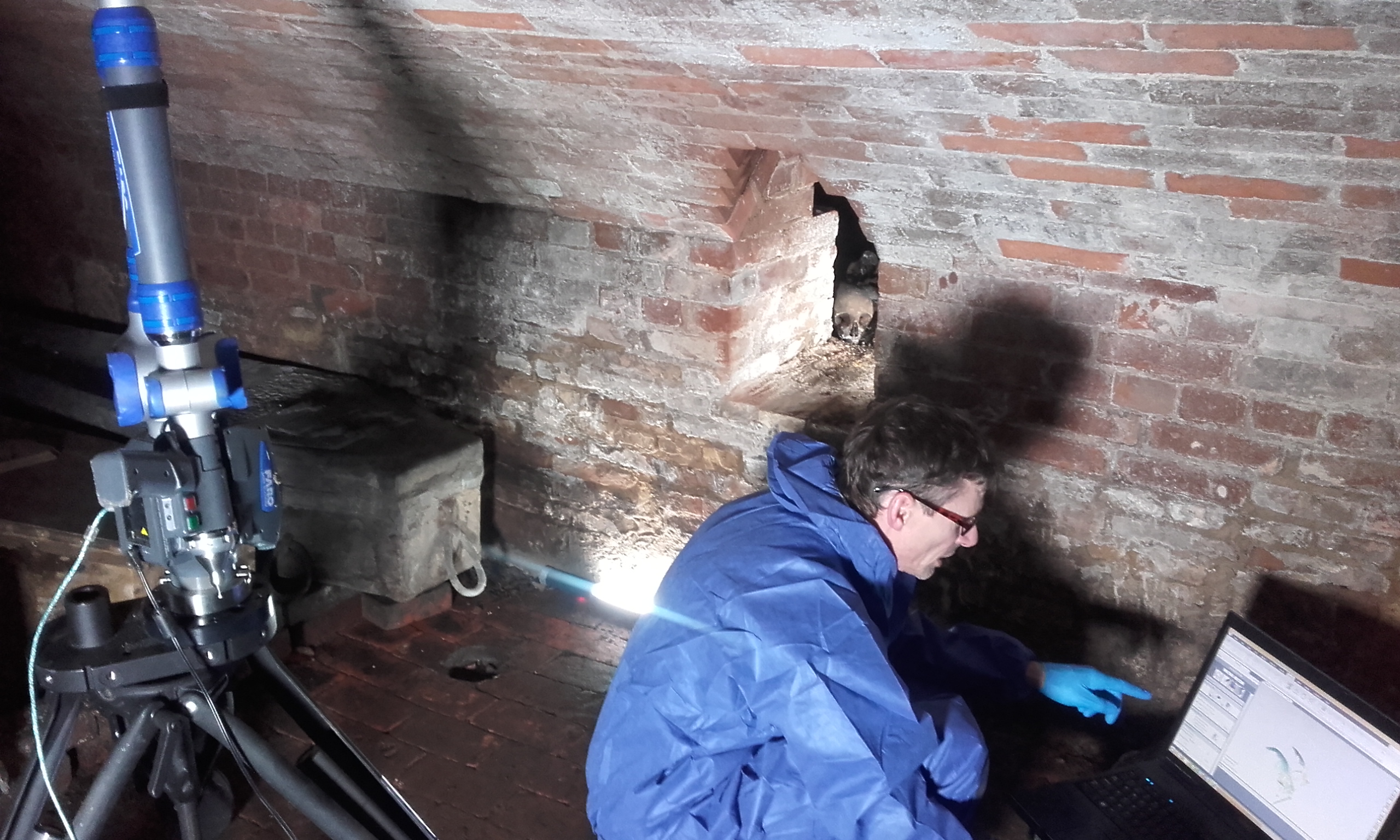
The Faro Arm laser is prepared to undertake the scan of the skull.
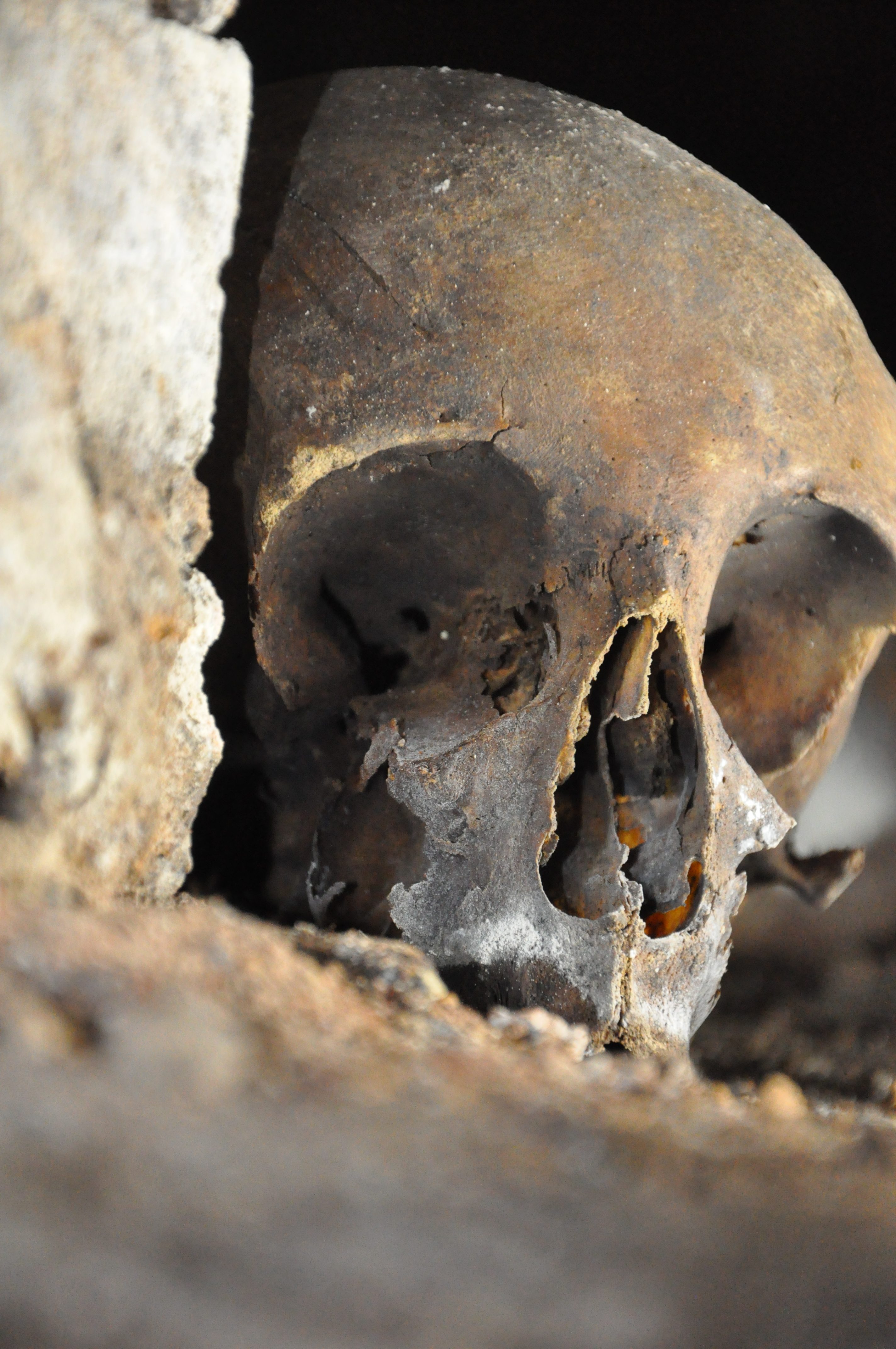
The unknown skull
‘How Shakespeare’s skull was stolen’
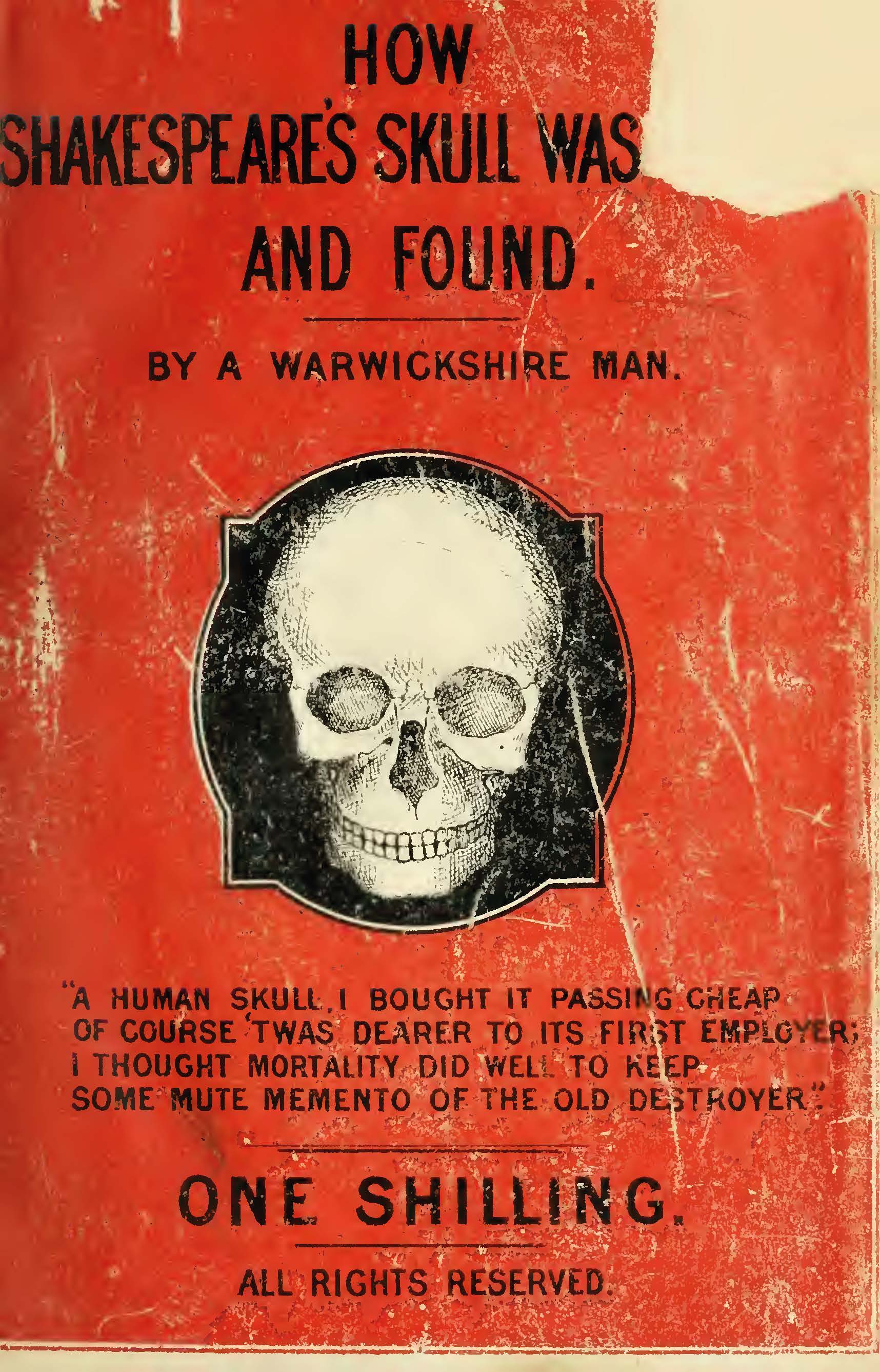 In 1879, Rev Charles Jones Langston published a story entitled ‘How Shakespeare’s skull was stolen’ in Argosy magazine. This recounted the events that allegedly took place approximately 100 years before when grave robbers broke into Holy Trinity Church in Stratford and exhumed the skull from William Shakespeare’s grave. This astonishing story can be corroborated by investigating the people and places mentioned in Langston’s remarkable tales. In a later publication entitled ‘How Shakespeare’s skull was lost and found’ (1884), Langston added new evidence that suggested that the skull had been hidden in the Sheldon family vault beneath the Sheldon Chapel at St Leonard’s. Langston also documents his visit into the vault with a churchwarden and his examination of the skull. The skull still resides within the Sheldon family vault. Permission was granted in 2015 for a forensic team to enter the crypt in an attempt to scan the skull using laser scanning technology and produce a 3D model. The skull was not disturbed in any way.
In 1879, Rev Charles Jones Langston published a story entitled ‘How Shakespeare’s skull was stolen’ in Argosy magazine. This recounted the events that allegedly took place approximately 100 years before when grave robbers broke into Holy Trinity Church in Stratford and exhumed the skull from William Shakespeare’s grave. This astonishing story can be corroborated by investigating the people and places mentioned in Langston’s remarkable tales. In a later publication entitled ‘How Shakespeare’s skull was lost and found’ (1884), Langston added new evidence that suggested that the skull had been hidden in the Sheldon family vault beneath the Sheldon Chapel at St Leonard’s. Langston also documents his visit into the vault with a churchwarden and his examination of the skull. The skull still resides within the Sheldon family vault. Permission was granted in 2015 for a forensic team to enter the crypt in an attempt to scan the skull using laser scanning technology and produce a 3D model. The skull was not disturbed in any way.
Post-fieldwork analysis and conclusions
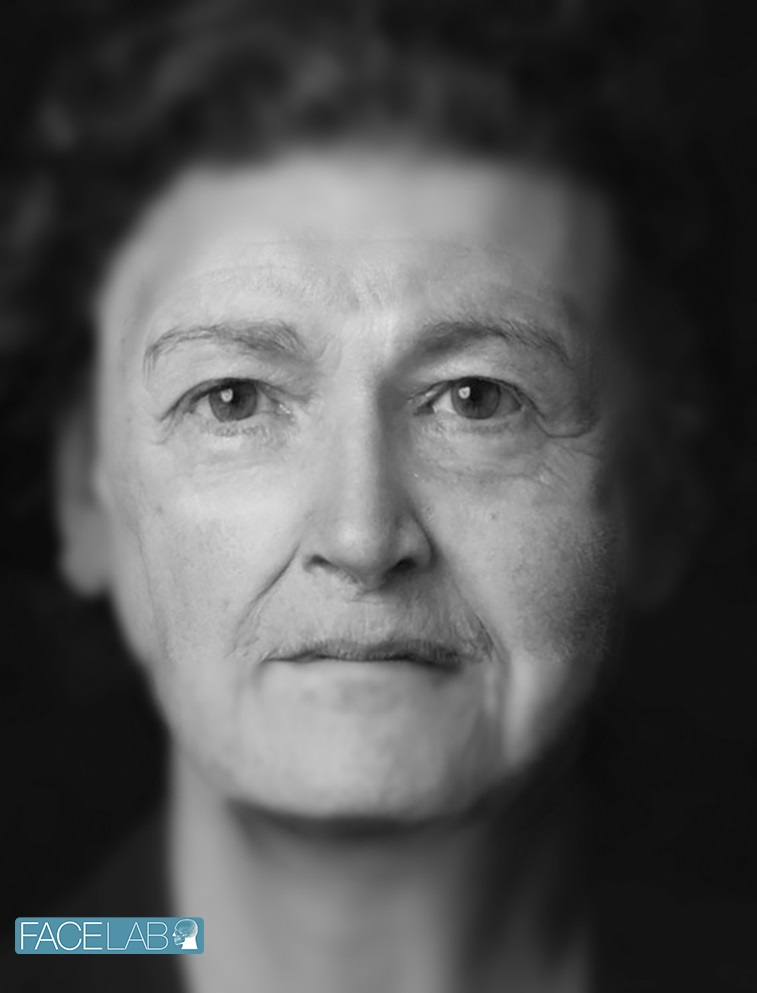 The collected data was collated and analysed by osteological experts. The laser scanning data was processed (images below show this process)and a 3D model of the skull was produced and sent for full facial reconstruction. The work concluded that the skull was female, and she died at approximately 70 years of age. Further research may be able to identify this woman as there are a number of the Sheldon family whose final burial places are not yet known. This discounts the theory that the Beoley skull is, in fact, Shakespeare’s remains, and therefore the second of Langston’s publications is probably false. However, the initial Argosy publication may indeed be accurate, and recent work at Holy Trinity at Stratford has provided evidence of a disturbance to the skull end of Shakespeare’s grave.
The collected data was collated and analysed by osteological experts. The laser scanning data was processed (images below show this process)and a 3D model of the skull was produced and sent for full facial reconstruction. The work concluded that the skull was female, and she died at approximately 70 years of age. Further research may be able to identify this woman as there are a number of the Sheldon family whose final burial places are not yet known. This discounts the theory that the Beoley skull is, in fact, Shakespeare’s remains, and therefore the second of Langston’s publications is probably false. However, the initial Argosy publication may indeed be accurate, and recent work at Holy Trinity at Stratford has provided evidence of a disturbance to the skull end of Shakespeare’s grave.
Return: Home, Searching for Shakespeare

